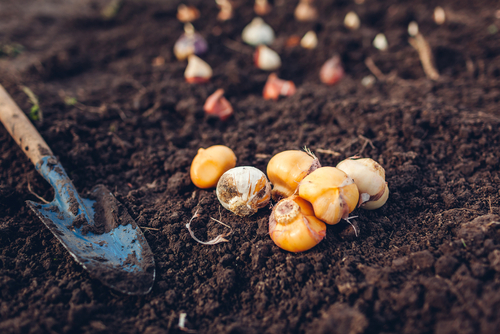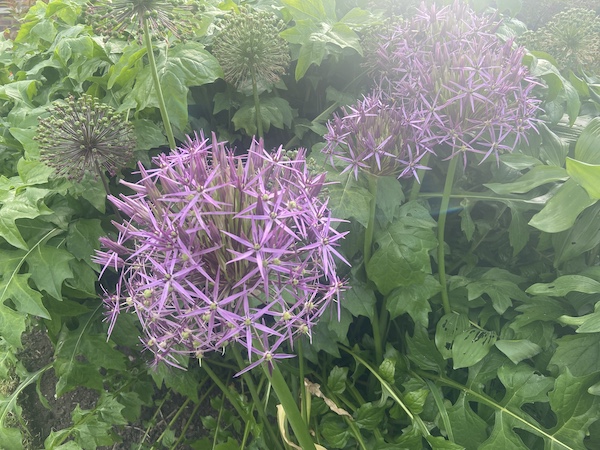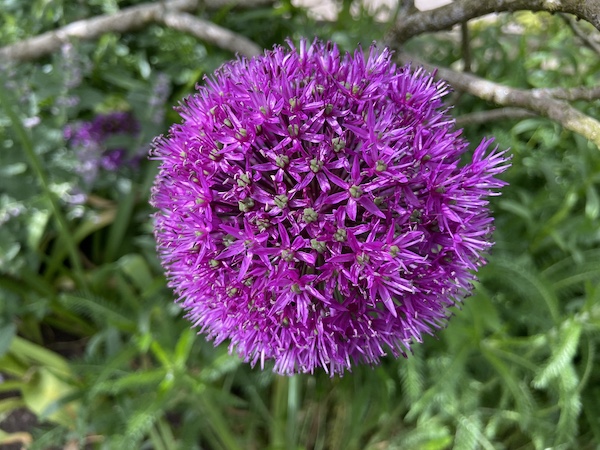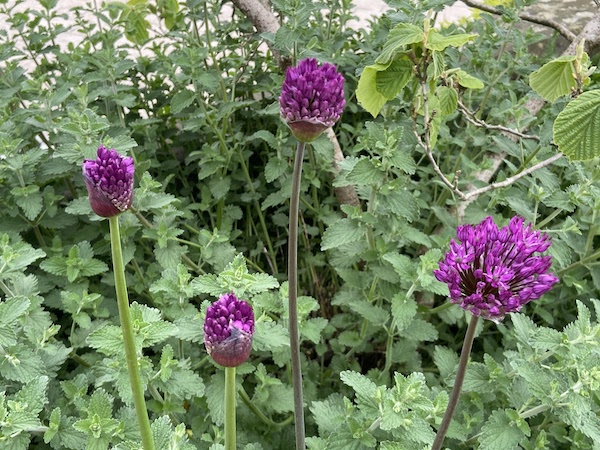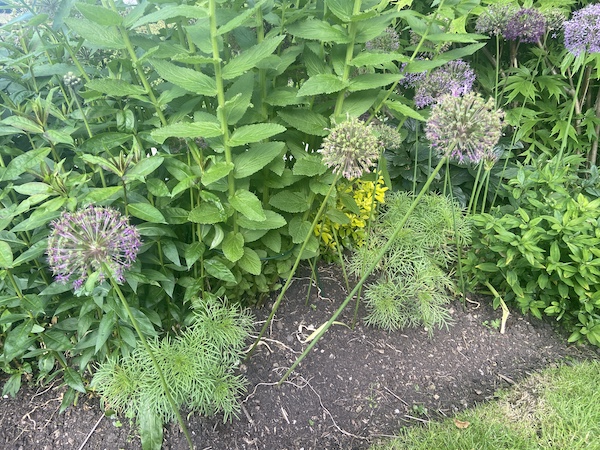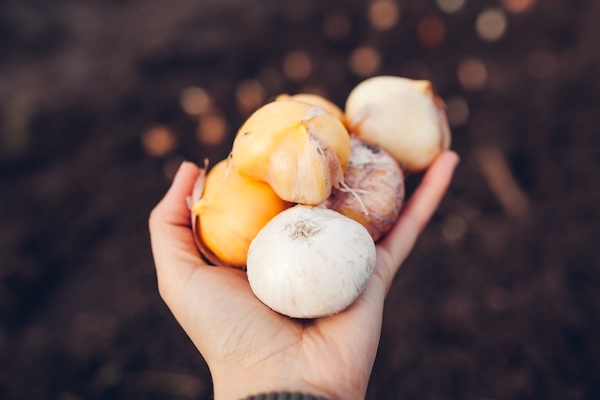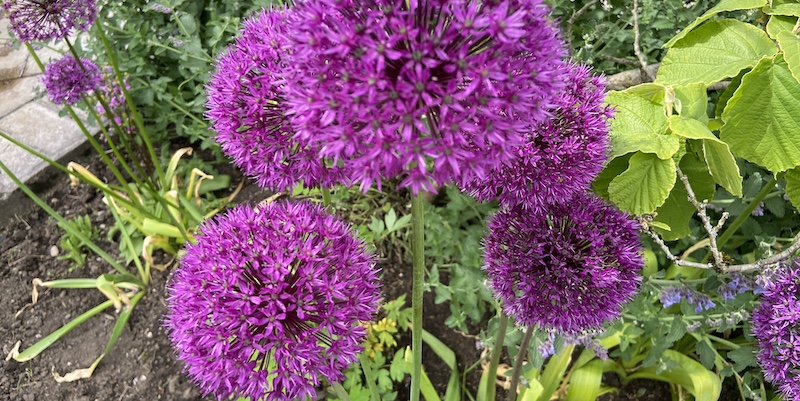
When and how to plant and grow alliums
Our site is reader supported, this means we may earn a small commission from Amazon and other affiliates when you buy through links on our site.
You should plant your alliums sometime between the start and the middle of autumn but you can also plant them in spring. This article covers how to plant alliums in the ground and also in pots. First things first, plant them in a sunny position, don’t plant them too shallow or too deep, 3-4 times the depth of the bulb and but large quality bulbs. Let’s get started!
When to plant alliums
Planting alliums in the fall gives them enough time to settle into their new position and to generate enough nutrients to see them through the dormancy period in winter. Anytime in September through to early November in the UK and US is a suitable time to plant your alliums.
Planting them in spring is also possible. But then they’ll probably spend all their first growing season establishing themselves and not have any energy left for developing flowers. That being said, if you buy large bulbs like I do and recommend, you will usually still get a decent show of flowers
Planting alliums in the ground
Finding the right location
Alliums like to be in full sunlight for at least six hours a day in the summer. They need well-drained soil that doesn’t become clumpy or waterlogged. Beyond that they’re not too fussy and fairly easy to grow.
Check your chosen location to see if any garden or home structures or trees are casting shade over the area. If your soil there isn’t the best for alliums, add grit or coarse sand to enable it to drain better. Water-soaked soil is a primary cause of problems with alliums. Check also that the planned allium bed isn’t in a windy area. If it is, arrange for a wind break in the way of a fence or some tall plants to shelter the alliums. Many alliums varieties are tall growing with very large flower heads but this makes them at risk of being blown over in windy positions. You might even want to consider using canes to support the flowers on the very large flower head varieties such as ‘Globemaster’.
Preparing the ground
Dig a hole or trench that will hold all your allium bulbs. How wide depends on the type of alliums you are planting but as a general rule, I recommend planting 3-4 times the depth of the bulb.
Add 5cm of grit, coarse sand or compost to the bottom of the hole, just to ensure great drainage, this helps avoid them from rotting off and not coming back.
Planting the alliums
Put the bulbs in the hole. Be sure to space them out so they don’t become overcrowded. Packing the bulbs too closely results in the plants competing with each other for sunlight, water and nutrients. Plus it also cuts down on air circulation which is vital for healthy alliums. A good rule of thumb is to leave a space between the bulbs that’s two to three times the diameter of the bulb.
Don’t place the bulbs too deeply. Smaller, younger bulbs should be placed more shallowly than larger, more mature bulbs. They need to be able to send shoots up to the surface. The measurement for depth is once again three to four times the diameter of the bulb.
Note: if you have fairly clumpy soil, plant the bulbs less deeply than this as they’ll have to force their way up.
Cover the bulbs with soil/compost and tamp them down firmly to remove any air pockets but make sure it’s not too compact.
Watering
In dry soil make sure you water in the bulbs well. They usually don’t need watering too often unless you have very dry soil.
Make sure to keep kids and pets off the area to protect the delicate shoots from the bulbs.
Planting alliums in containers
Preparing the pot
Choose a deep pot to plant your alliums in. It doesn’t matter whether it’s made of ceramic, plastic or terracotta as long as it has plenty of drainage holes in the bottom. Also, remember to add plenty of crockery or large stones to the bottom of the pots to ensure the drainage holes don’t become clogged up as they can lead to rotting bulbs.
Place a multi-purpose compost or a soil based compost such as John Innes potting compost. This is your chance to create just the right soil conditions for alliums. Consider adding some grit or coarse sand to improve the drainage if the soil seems a bit thick.
Planting your alliums
Plant the alliums to two or three times the diameter of the bulb, pointed end up. You don’t have to worry about adjusting depth this for the quality of your soil as you’ve carefully prepared that.
Make sure that the bulbs have at least 4cm of soil or compost underneath them. You may need to remove the bulbs and add more compost, or perhaps even move everything to a deeper container.
In containers, you can plant the bulbs just one bulb width apart. This gives an attractive mass effect. But make sure that the bulbs don’t touch the side of the pot.
Cover the layer of bulbs with more compost and firmly pat it into place. This removes any air pockets.
Water the bulbs in well. Alliums thrown in pots are best lifted every couple of year to stop them from becoming overcrowded and not flowering.
How to look after alliums
Here are some things to put into your allium care routine.
Fertilising
If your soil (usually in the garden) is somewhat lacking in nutrients, consider fertilising the alliums. The best time for this is when the leaves are just beginning to show. Use a bulb fertiliser to give the plant a boost for the growing season. A high in potash feed is also a good choice as it promotes better flowering.
Watering
Remember to water the plants regularly in the growing season and particularly through any dry spells. Wait until the top 3cm of the soil is dry, then water well, checking that the water is draining away and not pooling up.
Alliums grown in containers, like all potted plants, dry out faster than those in the garden. Check yours regularly to see if they need watering.
Keep watering the plants even after all the flowers have died. Stop when the leaves start to yellow.
Deadheading
When the flowers have passed their prime, deadhead them. This just means following the stem beneath the flower down to a leaf node and cutting it the stem off. This lets the plant focus its energy on the new blooms. Remember that the flowers only bloom once; you don’t get a second crop of blooms.
Leaving the foliage alone
Even though it may make your plant look a bit messy, don’t do anything with the foliage. Even after the blooms have gone, the leaves continue to make energy for the plant to store in the bulb over the winter and into the spring. Cutting the leaves down before they start to turn yellow shortchanges your alliums of the energy for producing new growth (including flowers) in the spring. It’s best just to let the leaves wither and die in their own time. You can learn more about what to do with alliums after flowering here.
Dividing the bulbs
Alliums need dividing about every three to four years. Make sure you do this in the autumn time, the same time as you’d plant new bulbs. See How to propagate alliums for more information.
Solving allium problems
Alliums don’t really need a lot of attention. However, some things, mainly environmental, can cause some problems with them. The article Why are my alliums not flowering? addresses the problems that alliums may develop. It also discusses ways to overcome your alliums’ issues.
